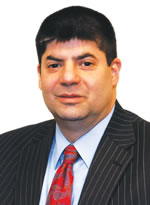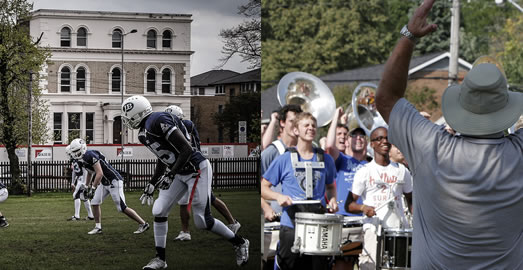Allegro
When Students are Workers…
Volume 114, No. 5May, 2014

Harvey Mars, Esq.
Harvey Mars is counsel to Local 802. Legal questions from members are welcome. E-mail them to HsmLaborLaw@HarveyMarsAttorney.com. Harvey Mars’s previous articles in this series are archived at www.HarveyMarsAttorney.com. (Click on “Publications & Articles” from the top menu.) Nothing here or in previous articles should be construed as formal legal advice given in the context of an attorney-client relationship.
What do college football scholarship recipients and music students have in common? Well, according to a recent decision issued by NLRB Region 13, they might both be considered employees entitled to union representation. In a highly controversial decision handed down in March (Northwestern University v. College Athletes Players Association, 13-RC-121359), the NLRB determined that Northwestern College football scholarship students were actually employed by the university as football players and were thus entitled to form a union. As a result of that determination, the students will soon be able to participate in an NLRB-sanctioned election to determine whether or not they wish to select the College Athletes Players Association as their exclusive bargaining representative.
In finding that the scholarship students were employees of the university, the NLRB had to distinguish this case from several decisions in the educational arena where graduate teaching assistants were deemed primarily to be students and not to be employees. (As I’ve written here before many times, only employees as defined in the National Labor Relations Act are entitled to the protections of that law, including the ability to form a union.)

Scholarship football players just won the right to unionize. If the decision prevails, it may also apply some day to music school students, such as marching band members and others.
In this case, the labor board first reiterated that the common law definition of “employee” determined whether the players could unionize. Under that definition, an employee is a person who performs services for another under a contract of hire, subject to the other’s control or right of control in return for payment (see Brown University, 342 NLRB 483, 2004).
Next, the NLRB had to grapple with the fact that the football players, even though they are on paid scholarships, are still essentially college students. In other cases that involve students who are hired by the university (such as graduate students who teach classes and grade papers), their obligations, though compensated, are part and parcel of their academic degree requirements.
But here, the board found that there were significant factors that distinguished the football players from other kinds of students. For example, with respect to their duties as football players, they were bound by rigid guidelines. Furthermore, they received scholarship money based upon their compliance with those guidelines, and spent a considerable amount of time performing their duties during practice and during games. Their obligations as football players had no bearing on their graduation requirements. In contrast with the graduate teaching assistants – who were denied the right to organize because they were deemed students, not employees – the football players’ duties as athletes were distinct from their academic obligations. The players spent 50 to 60 hours per week on their athletic responsibilities during a pre-season training camp and between 40 to 50 hours a week on football-related activities during the season. They only spent 20 hours a week attending classes. The NLRB observed that the football players spent more time on athletics than some part-time workers out in the world. Furthermore, the scholarship program required the university to outlay a considerable amount of money: over $5 million a year. Considering all these factors, the football players were not considered to primarily be students and thus were granted the right to organize as employees.
I believe that this decision may also be significant to students who attend universities on music scholarships. For instance, many universities with collegiate competitive football programs also have marching bands that similarly have rigorous standards for their participants. Band members who are granted scholarships to the school because of their musical ability may, under the same rationale employed by the NLRB here, be deemed employees because of the control exercised by the university over their participation in the band. The level of commitment, financial support and lack of connection with academic responsibilities render this decision transferable to band members.
Nonetheless, this decision is going to be challenged, and it may be some time before it is clear that the football players have the legal right to organize. With the current composition of the NLRB, there is a likelihood that the challenge will fail, which will be good for music students on scholarship.
More good news from the NLRB
The NLRB has proposed changes to representation election procedures that will make it easier for unions to prevail. One of the biggest challenges to union organization is the time it takes to actually obtain an election. Management often manipulates the system to cause delay and frustration, including taking advantage of frivolous appeals. The new rules will cut down on bogus issues, delay tactics and appeals while at the same time increasing the information available to unions about the composition and identity of the work force. While these regulations have not yet been adopted, it appears that they will be. The change in regulations would be a well needed shot in the arm for organized labor.
